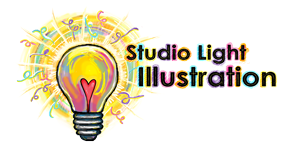Artwork and Reflection by Sebila Kratovac
Living in New York City throughout my 20s, I became disillusioned with what it means to belong to a creative community. As an artist and a creative, I tried to figure out how to make artist friends without success. Either I wasn’t “cool” enough, self-destructive enough, or technically skilled enough to find the right fit for me so I developed a negative view of artist communities in general. My perceived failure to belong to a creative community in NYC planted a seed of unworthiness into my subconscious, a self-sabotaging belief that I somehow would never belong to anything just the way I am.
The fact that many artists, including me, are introverts, at least most of the time, led me on a path of isolation, loneliness, and stuckness. I am still on this journey of finding my “tribe” and have recently come across very informative YouTube vlogs (4 Ways to Build Creative Community and How I Built a Creative Community That Kicked Off My Creative Career) by Tom Froese, a very talented illustrator and educator. In his story-infused videos, Froese talks about how he brought himself out of depression by building a creative community around him before the days of social media. He mentions ways in which he connected with other creatives, initiating relationships that helped him become more confident and inspired to pursue an illustration career. But how does an introvert with limiting beliefs become a creative community builder?
Froese describes how his yearning for being seen and appreciated for who he is became a strong motivation for him to share his art. He started with blogging - sharing his thoughts, song lyrics, digital photography, and other creations. Once he gained a following, he slowly developed confidence and created his own meetup group Creative Breakfast. Taking a small step such as sharing our art on Instagram so that people can find us can be a powerful catalyst for getting unstuck. This way, we can attract an audience and can get our followers involved with our creative process. For example, Froese started posting illustrations of noses on Instagram every day for 100 days under the hashtag #the100dayproject. As he received more interest in his art, he began engaging with his followers by commenting on their posts and leaving positive feedback, as well as answering all their questions. Social media can be a great tool to attract people who match our interests and many people who meet through social media go on to start online communities through Zoom and other digital platforms.
This amount of online engagement can seem intimidating and exposing to a lot of introverts and I have found myself coming in and out of social media when it begins to feel too overwhelming for me. But, luckily, there are many alternative ways to engage with other creatives. If you are more comfortable connecting with others in person, you can create a workshop, a meetup group, or an event such as a dance party or a potluck where creatives with similar interests and values can come together. Froese talks about going to conferences for creatives where he made many personal and business connections. From my own experience, taking a course or pursuing further education in a desired creative field will automatically give you access to other creatives, feedback, and mentorship. You can also seek out mentorship outside of academia so don’t be afraid to reach out to more experienced creatives for help.
What if there aren’t many physical opportunities to meet creatives in your area? Since big cities are becoming too expensive for artists, Froese suggests to search online for smaller, more affordable towns with burgeoning artist communities and see if moving to one of them is a good choice for you. If moving is not possible, collaborating with other creatives remotely could be a good way to create deeper relationships with others. Collaborations are also a great way to get inspired, learn from others, get feedback, or just to be held accountable for creating new artwork.
How can we make the first step to put ourselves out there? What has helped me is to make peace with my discomfort in certain social situations. It is okay to feel anxious, slow to trust, or uncertain about how to create boundaries with people. But, since most of us, introverts included, want to connect with others - to be seen and heard – we can take small steps toward connecting with others, even if it seems uncomfortable in the beginning. To make the process less stressful, we can think about how we want to feel around people we want to connect with and imagine we are already surrounded by our tribe. We can pay attention to how we feel when we meet people and ask ourselves “Do I feel good around this person or am I pursuing this relationship because I feel lonely?” Most of us have a desire to belong, but at what price? One of Froese’s greatest takeaways is that the best way to become unstuck and authentically connect with others is to build our own creative communities, on our own terms. This way, we can attract people to us through freely sharing who we are, be it by writing a blog or posting our artwork. Connecting with people takes vulnerability and an open heart ready to risk disappointment. As long as we can cultivate courage and healthy boundaries (this comes with life experience), as well as patience for authentic connection, we will eventually find what we are looking for and thrive.


